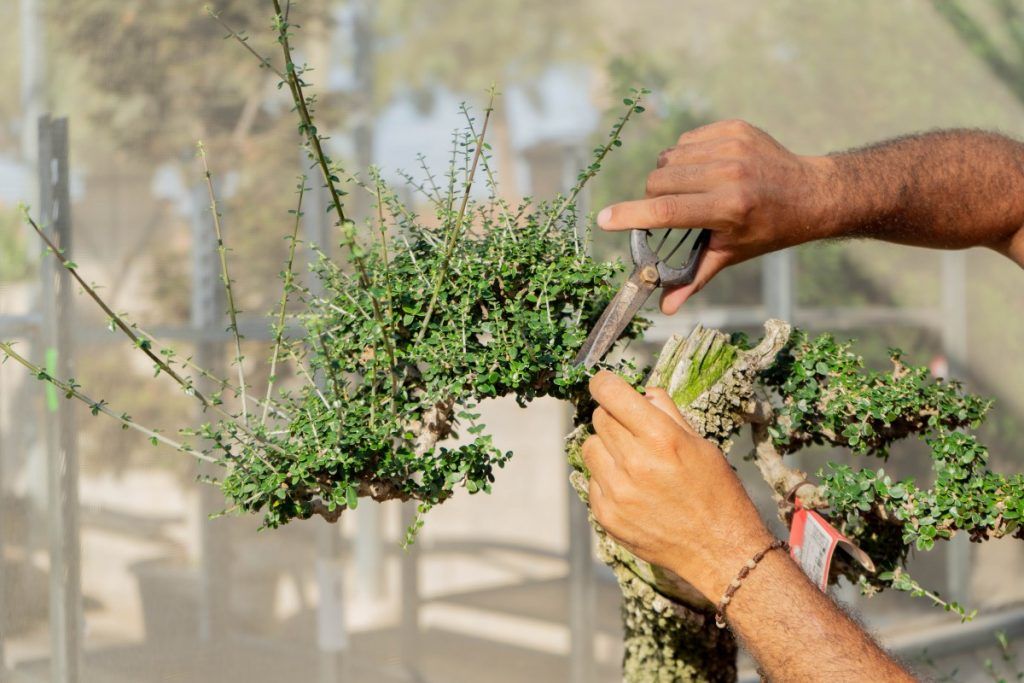Learn how to choose your first bonsai

Do you want to get started in the world of bonsai, but you don’t know where to start? How can I choose my first bonsai? What should I keep in mind?
These are some of the most frequent questions we are asked. If you want to start in the world of bonsai, but still have doubts, you cannot miss this article:
Indoor or Outdoor?
The first question we must ask ourselves is where am I going to locate my first bonsai, indoor or outdoor?
Inside the house
If we want to place it inside the house, we must tick some boxes so that the bonsai is in perfect condition:
- Natural light. It is very important to know where is best to place it. It must be less than half a meter from a bright window.
- Away from electrical appliances such as computers, refrigerators, microwaves, televisions… anything that emits heat. Also sources of heating or air conditioning. They dry out the environment which the opposite from what our small tree needs.
- Rotate the bonsai once a week, to balance its development.
If we choose this option, we will get trees that adapt well to the interior of the houses, therefore, species of tropical origin, such as Ficus retusa, Serissa, Carmona, Zelkova, Zanthoxylum or Sageretia.
In other words, these species that adapt well inside homes. However, they can also be located outside, during the less cold months, for example, from May to September.
Outdoor
If we have a balcony, garden or terrace, it will be a very good idea to opt for a bonsai that we can place outside throughout the year. Most of the species can be in full sun all year round, although we should learn their specific characteristics. Some need more sun than others, they can survive to more extreme temperatures, etc.
There is a great variety of species that we can choose, for instance, apple trees, olive trees, pomegranates, pines, junipers and a long etc.
How much time should I dedicate to it?
Bonsai are living things that need time and dedication. We have to make sure that they receive at least the most basic care so that they are strong and healthy.
It is very important to water appropriately, so we must pay attention to its water needs. We must bear in mind that the frequency of irrigation can change. This may depend on the species we have, the weather conditions, the humidity of the environment…
What species can we start with?
Having answered the previous questions, we can have a look at the most common species of bonsai. We will classify them according to the level of “difficulty” in caring.
*Deciduous: those species that lose their leaves during autumn and winter and sprout again in spring.
*Conifers: Conifers are plants with seeds of a type called cone or bearing. Currently there are more than 550 species, all of which are trees or shrubs, thus dominating forests in high latitudes with their needle-shaped evergreens such as pines, junipers, cedars, firs, spruces and redwoods, being the best known members of this family.
About the Author
Mistral Bonsai
In Mistral Bonsai we are a communication team, technicians and masters committed from the first day to disseminating the wonderful art of bonsai. A world that offers many things to share. We believe that a bonsai is a tree with a soul, unique and unrepeatable. Another of our most essential pillars is, how could it be otherwise, our close commitment to the preservation of the environment and nature.
Categories
Bonsai cultivation and care (54)
Bonsai gift (2)
Bonsai pests and diseases (6)
Bonsai repotting (3)
bonsai substrates (2)
bonsai tools (1)
Bonsai work (10)
Ceramic pots (3)
Chinese culture (2)
Chinese culture (1)
Corporative Mistral Bonsai (8)
Cuidados del bonsái (22)
Cultivo del bonsái (20)
Dead wood (2)



